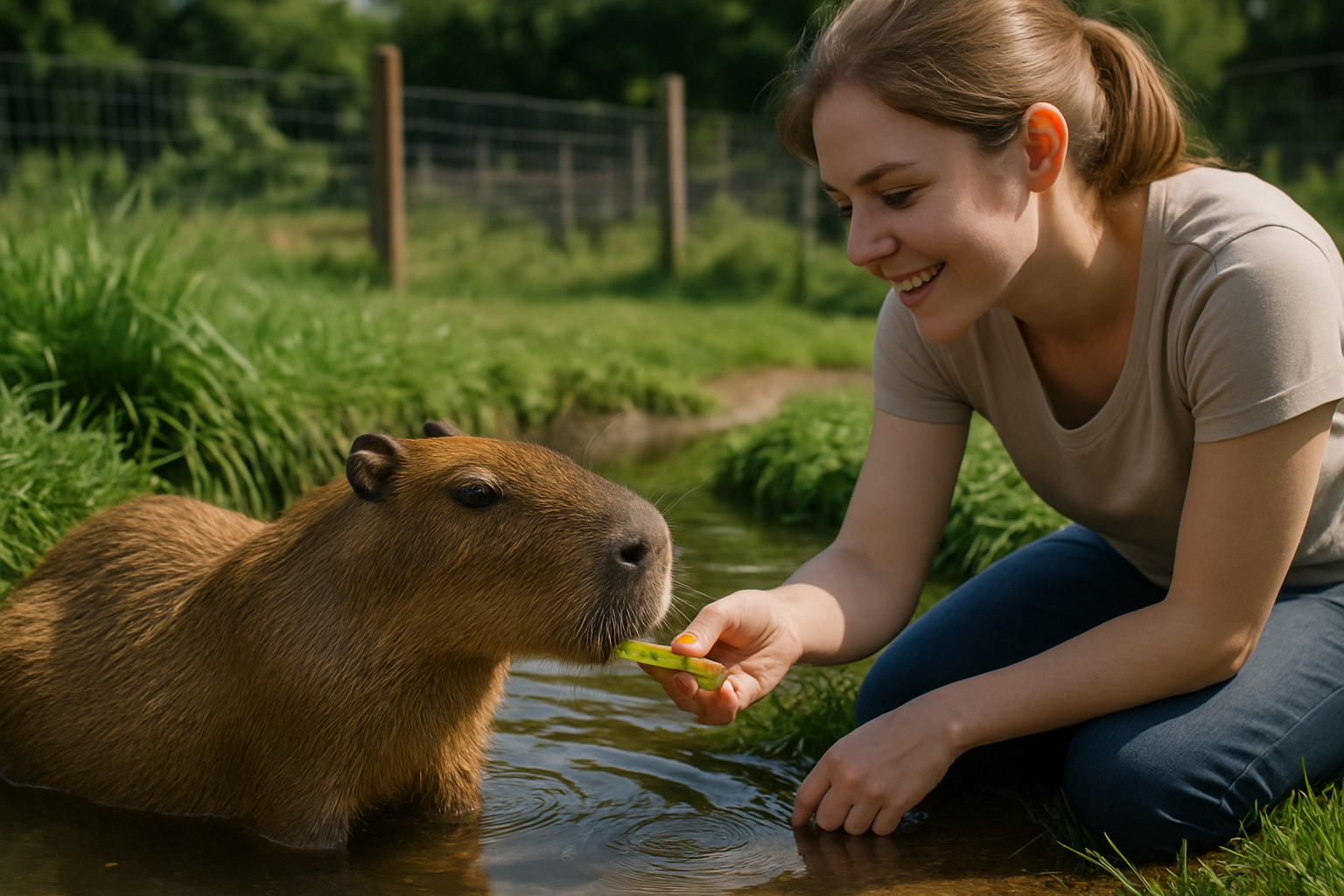The Surprising World of Capybara Companionship
Imagine a pet that's part guinea pig, part hippo, and entirely adorable. Enter the capybara, the world's largest rodent and an increasingly popular exotic pet. This article delves into the fascinating realm of capybara companionship, exploring their unique characteristics, care requirements, and the growing trend of keeping these social creatures as household pets.

The Rise of Capybara Pet Ownership
Over the past decade, there has been a notable increase in capybara pet ownership, particularly in regions where exotic pet ownership is legal. This trend can be attributed to several factors, including their gentle temperament, social media influence, and the desire for unique pets. However, it’s crucial to note that capybaras are not traditional pets and require specialized care and environments to thrive in captivity.
Legal Considerations and Ethical Concerns
Before considering a capybara as a pet, it’s essential to understand the legal landscape surrounding exotic pet ownership. In many countries and states, keeping capybaras as pets is illegal or requires special permits. Prospective owners must research local laws and regulations thoroughly. Additionally, ethical concerns arise regarding the welfare of these social animals in captivity, particularly when kept alone or in unsuitable environments.
Creating a Capybara-Friendly Habitat
Capybaras have specific habitat requirements that differ significantly from traditional pets. They need access to both land and water, with a large pool or pond being essential for their well-being. A spacious outdoor enclosure of at least 600 square feet per capybara is recommended, along with shelter from extreme weather conditions. The enclosure should include areas for grazing, lounging, and swimming. Indoor spaces must be capybara-proofed, as these curious creatures are known for their chewing habits.
Diet and Nutrition for Pet Capybaras
In the wild, capybaras are herbivores, primarily feeding on grasses and aquatic plants. As pets, their diet should consist mainly of grass hay, supplemented with a variety of fresh vegetables and fruits. Specialized capybara pellets are available and can be included as part of a balanced diet. It’s crucial to avoid foods high in sugar or fat, as capybaras are prone to obesity in captivity. Providing a diet that mimics their natural grazing behavior is essential for their physical and mental well-being.
Social Needs and Companionship
One of the most critical aspects of capybara care is addressing their social needs. These animals are highly social and thrive in groups in the wild. Keeping a single capybara as a pet can lead to stress and behavioral issues. Ideally, capybaras should be kept in pairs or small groups. They can form strong bonds with their human caregivers but require constant companionship and interaction. Some owners report success in integrating capybaras with other pets, such as dogs or horses, but careful supervision is necessary.
Health Care and Veterinary Considerations
Finding a veterinarian experienced in exotic pet care, particularly with capybaras, is crucial for their health and well-being. Regular check-ups, vaccinations, and parasite prevention are essential. Capybaras are susceptible to certain health issues, including dental problems, skin conditions, and parasitic infections. Their semi-aquatic nature also requires special attention to foot care to prevent infections. Owners should be prepared for potentially high veterinary costs associated with exotic pet care.
The Financial Aspect of Capybara Ownership
Owning a capybara is a significant financial commitment. The initial cost of purchasing a capybara can range from $1,000 to $3,000, depending on the breeder and location. However, this is just the beginning. The expenses associated with creating and maintaining a suitable habitat, providing proper nutrition, and ensuring regular veterinary care can easily amount to several thousand dollars annually. Potential owners should carefully consider these long-term financial implications before committing to capybara ownership.
Capybara Behavior and Training
While capybaras are generally docile, they are not domesticated animals and retain many of their wild instincts. They can be trained to some extent, particularly when it comes to basic commands and litter box use. However, their training requires patience, consistency, and an understanding of their natural behaviors. Capybaras communicate through various vocalizations and body language, and owners must learn to interpret these signals to build a strong bond with their pet.
The Impact of Capybara Pets on Conservation
The growing trend of capybara pet ownership has sparked discussions about its impact on wild populations and conservation efforts. While most pet capybaras are bred in captivity, there are concerns about the potential for illegal wildlife trade. On the positive side, responsible capybara ownership can raise awareness about these unique animals and their natural habitats, potentially contributing to conservation efforts. However, it’s crucial for potential owners to source capybaras from reputable breeders and support ethical practices.
In conclusion, capybara companionship offers a unique and rewarding experience for those prepared to meet their specialized needs. These gentle giants can form strong bonds with their human caregivers and provide endless fascination with their quirky behaviors. However, potential owners must carefully consider the legal, ethical, financial, and practical implications of keeping a capybara as a pet. With proper care, commitment, and understanding, capybaras can thrive in captivity, offering a glimpse into the extraordinary world of South America’s largest rodent.





